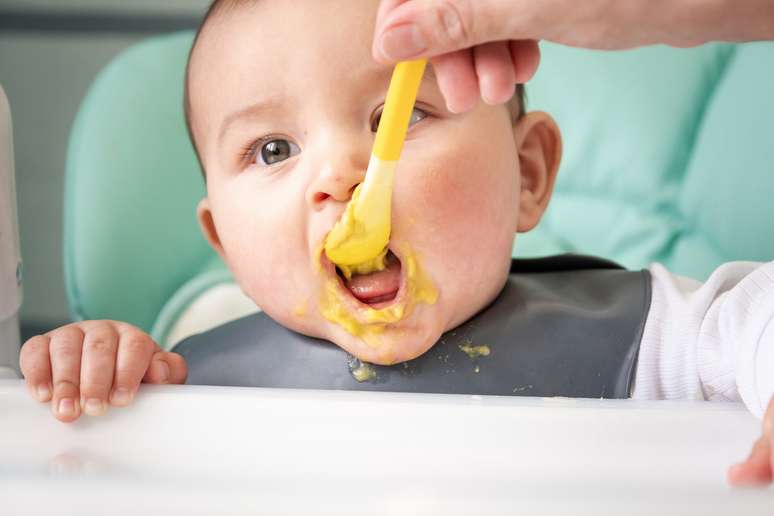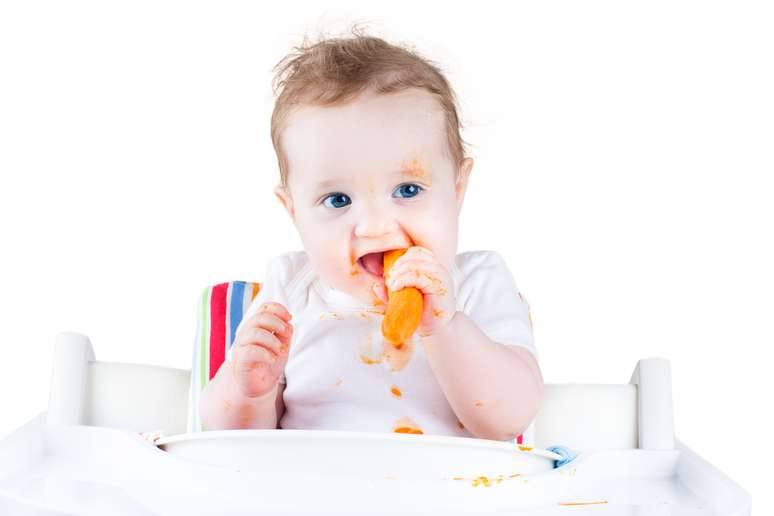The nutritionist indicates the modalities and explains what can and cannot be offered to children in the first year of life
html[data-range=”xlarge”] figure image img.img-f70b0340bc31fb1782dfc23b811414e21hrlggk9 { width: 774px; height: 516px; }HTML[data-range=”large”] figure image img.img-f70b0340bc31fb1782dfc23b811414e21hrlggk9 { width: 548px; height: 365px; }HTML[data-range=”small”] figure image img.img-f70b0340bc31fb1782dfc23b811414e21hrlggk9, html[data-range=”medium”] figure image img.img-f70b0340bc31fb1782dfc23b811414e21hrlggk9 { width: 564px; height: 376px; }
New moms and dads are always discovering new things about baby nutrition. In the midst of this, they come across a wealth of information and guides on how to start introducing children to food and what to offer at each stage of children’s development.
To remove the main doubts, the Earth spoke to nutritionist Scheila Cristina. Specialist in Clinical Nutrition, you recalled that the general recommendation is to maintain exclusive breastfeeding during the first six months of the child’s life. When some factor prevents or restricts breastfeeding, those responsible may resort to formula milk.
After six months, how to start introducing children to food?
In addition to traditional baby food, other popular methods are BLW (Baby Led Weaning or Weaning Guided by the Baby in the Portuguese translation), BLISS (Baby Led Introduction to Solids) and Participatory. Understand the differences:
blw extension
The food is cut into strips or small pieces and served on a plate so that the child can eat on his own, with his own hands. The aim is to encourage the development of motor coordination and connection with food.
BLISS
It is a variation originated from BLW. The differential is the reinforcement in the intake of foods rich in iron and with higher energy density.
Participatory
This is the method that adds the traditional baby food, given by those in charge, to the BLW, in which the child has more autonomy. That is, meals can be offered either by an adult, crushed so that the child can eat them, or in pieces so that the child can explore the portions, texture and flavor to her liking.

As Scheila explains, the period after six months of life is the best to start the process because the baby’s digestive system will be better prepared. “Besides this factor, [é quando] we begin to observe if the child has signs of readiness, such as sitting up by himself and supporting the head and trunk, reduction or elimination of protrusion, interest in food, holding objects with the hands and performing chewing movements “, lists the nutritionist.
What foods should be offered at this stage?
According to the professional, the ideal is to start introducing foods with carbohydrates, which are sources of energy for the growth and development of the child. Legumes are also indicated, such as beans, peas, lentils and chickpeas, as well as vegetables, fruit and proteins. The recommendation is to balance your child’s meal with vitamins, minerals and fiber.
What foods to avoid?
On the other hand, substances such as sugar, honey, coffee, fried foods, snacks and canned products should not be offered to children in the first years of life. Scheila teaches that parents should keep in mind that children’s food must be rich in nutrients throughout their development.
Source: Terra
Ben Stock is a lifestyle journalist and author at Gossipify. He writes about topics such as health, wellness, travel, food and home decor. He provides practical advice and inspiration to improve well-being, keeps readers up to date with latest lifestyle news and trends, known for his engaging writing style, in-depth analysis and unique perspectives.







-t4ygakrtjjn9.jpg)

